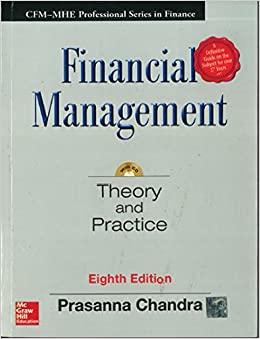Question
An investor has $10,000. She can make an investment that is equally likely to cause a net profit of $9,000 or a net loss of
An investor has $10,000. She can make an investment that is equally likely to cause a net profit of $9,000 or a net loss of $5,000 (that is, when her initial wealth is $10,000, her final wealth with investment will become either $19,000 or $5,000). Her utility function, where x denotes wealth is
ln(x) for x< $11,500
ln(2x) for x
$11,500.
Use two decimal digits in calculations.
(a) (8 points) Should she invest? Draw a decision tree and calculate the related utilities.
(b) (16 points) Suppose the investor will make the investment decision after engaging in a gamble where she will either win or lose $1500 with an equal chance (that is, her wealth will become either $11,500 or $8,500). Should she invest if she wins the gamble? Should she invest if she loses the gamble? Show your decision trees and utility calculations.
(c) (16 points) Now, the investor has two choices:
Option NoGamble (NG): She can choose to invest or not without the gamble, that is, as in part (a).
Option AfterGamble (AG): She can choose to invest or not after engaging in the gamble of part (b).
Which option shall she choose? Compare the Expected Utilities and the Expected Monetary Values under the two options. Comment on what you observe.
Step by Step Solution
There are 3 Steps involved in it
Step: 1

Get Instant Access to Expert-Tailored Solutions
See step-by-step solutions with expert insights and AI powered tools for academic success
Step: 2

Step: 3

Ace Your Homework with AI
Get the answers you need in no time with our AI-driven, step-by-step assistance
Get Started


